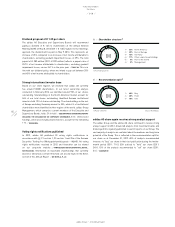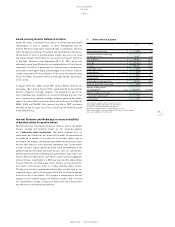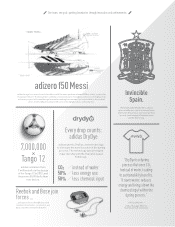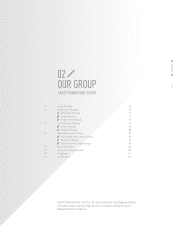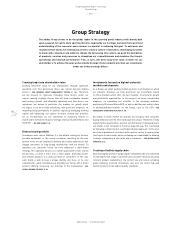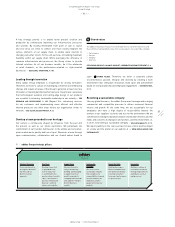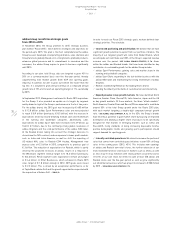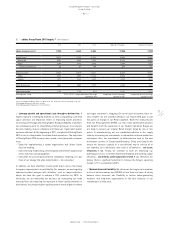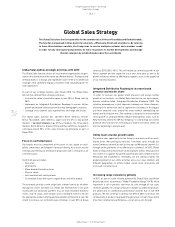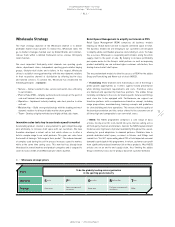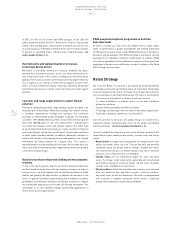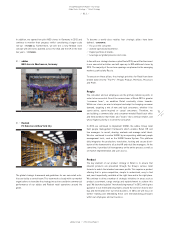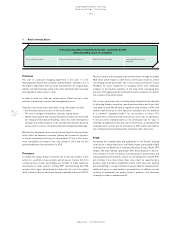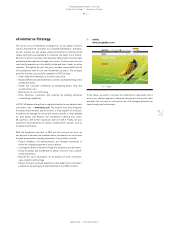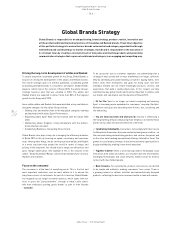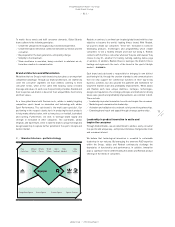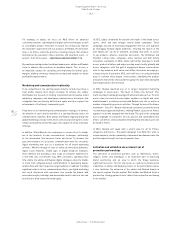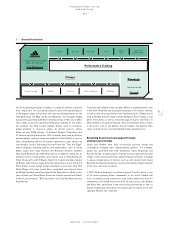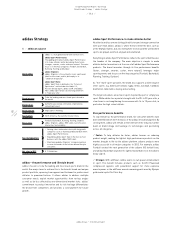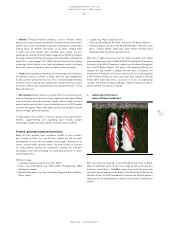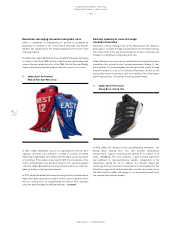Reebok 2012 Annual Report Download - page 96
Download and view the complete annual report
Please find page 96 of the 2012 Reebok annual report below. You can navigate through the pages in the report by either clicking on the pages listed below, or by using the keyword search tool below to find specific information within the annual report.
adidas Group
/
2012 Annual Report
Group Management Report – Our Group
74
2012
/
02.2
/
Global Sales Strategy
/
Retail Strategy
In 2013, we will roll out several new RSM concepts. In the USA, the
adidas brand will further roll out its “Home Court” shop-in-shop concept
aimed at the sporting goods retail channel. In addition, we will also see
an increasing focus on Reebok as the brand rolls out its Fit Hub concepts
to present its expanded fitness offering more comprehensively
/
SEE
GLOBAL BRANDS STRATEGY, P. 78.
Harmonisation and standardisation of processes
to leverage best practices
Wholesale is constantly working on reducing complexity by imple-
menting best operational practices across our entire wholesale activ-
ities. A key area of focus in this respect is rolling out a trade terms policy
globally that rewards customer performance either by higher efficiency
(e.g. in logistics), cost savings or better sell-out support. As part of this
effort, we have established regular reporting, delivering meaningful
benchmarks that allow us to better control our third-party retail support
activities.
Customer and range segmentation to exploit market
potential
Rolling out standardised product range packages around the globe is an
important part of the Group’s Wholesale strategy. The initiative involves
a customer segmentation strategy that facilitates the systematic
allocation of differentiated product packages to groups of comparable
customers. With 40,000 different partners around the world that operate
more than 100,000 points of sale, this segmentation is broadly based
on a distinction between sports and lifestyle retailers that either have
an up-market brand-driven positioning or a value-oriented commercial
positioning. By best suiting their specific needs, this provides a platform
to better exploit market potential. In addition, Wholesale continues to
partner with retailers on increasing the level and quality of sell-through
information the Group receives on a regular basis. This creates a
mutually beneficial understanding of their needs. At the same time, this
helps us to drive incremental business opportunities and ensure globally
consistent distribution logic.
Build strong relationships with leading and most dynamic
retailers
To win in the sporting goods industry, we need to develop collaborative
and fact-based strategic plans with our leading customers. In order to
ensure success, we work together with our leading customers to jointly
identify and quantify the opportunities to improve our business in the
future. To gain full customer understanding and to maximise customer
profitability, we have been investing considerable resources to support
the tracking and analysing of sell-out and sell-through information. This
will enable us to reach binding strategic partnership agreements to
realise joint business opportunities.
PEAK people development programme to build the
best sales team
In order to activate our sales force and enable them to reach higher
levels of performance, a people development and training framework
for Wholesale has been created called PEAK (Performance, Excellence,
Activation and Knowledge). The PEAK performance framework sets the
expectations for individual excellence in Wholesale. In addition, PEAK
also offers a guideline for desired behaviour and actions that support our
employees to become successful leaders in order to deliver on the Route
2015 strategic business plan.
Retail Strategy
Our vision for Retail is to become a top retailer by delivering healthy,
sustainable growth with outstanding return on investment. Retail plays
an increasingly important role for the future of our Group and our brands,
and is a key driver on our Route 2015 journey. The reasons are manifold:
/
To showcase the breadth of our brands (e.g. brand centres).
/
To create distribution in markets which do not have traditional
wholesale structures.
/
To grow another profitable distribution channel.
/
To leverage our learnings from own retail for the entire organisation.
/
To provide a clearance channel (i.e. factory outlets).
Over the past five to ten years, the adidas Group has evolved into a
signifi cant retailer, operating 2,446 stores for the adidas and Reebok
brands worldwide
/
SEE RETAIL BUSINESS PERFORMANCE, P. 152.
In order to simplify the shape of our store chain, we have clustered it into
three different types, namely brand centres, concept stores and factory
outlets.
/
Brand centres are large stores carrying the full range of each of our
adidas sub-brands under one roof. They are the bold and powerful
statements about the adidas brand’s strength, breadth and depth.
This format will be kept to a limited number and only in exclusive
locations such as New York, Paris or Shanghai.
/
Concept stores are the commercial engine for sales and profit
across the Group’s retail organisation, upholding and accentuating
each brand’s reputation. There are adidas concept stores, Originals
concept stores and Reebok concept stores.
/
Factory outlets facilitate the controlled sale of excess stock returned
from our wholesale key and field accounts, franchise partners,
own-retail stores as well as eCommerce. The stock is complemented
with a portion of planned production which creates a balanced
product offering aimed at maximising profitability.


